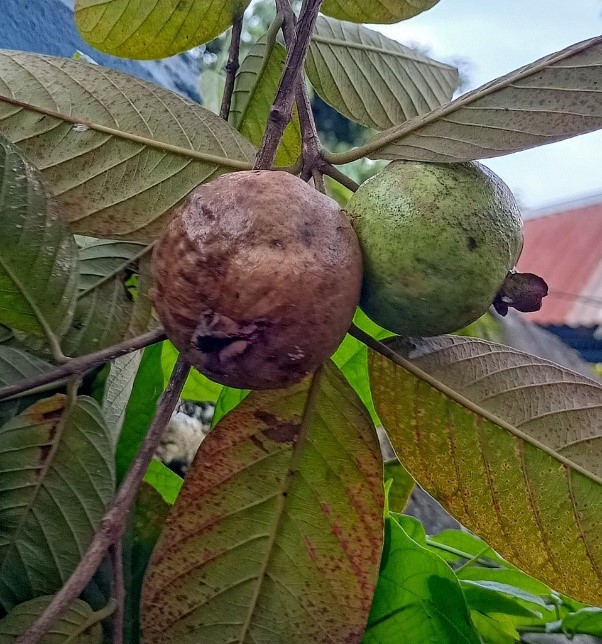
Context
At a tea shop on a sunny afternoon in Nepal, education experts such as principals, teachers, and policymakers are deep in conversation about the state of school leadership. The discussion is animated and is filled with concerns, hopes, and critiques of the current system. Outside, a guava tree draws the group’s attention. Guavas hanging from their branches are in various stages of ripeness; some fresh and ripe, some rotting, and others still too green to be consumed. Interestingly, these guavas symbolize the different types of leadership in Nepal’s education system.
This metaphor extends beyond just a reflection on local school leadership; it also touches on the broader global educational agenda, resonating with the United Nations Sustainable Development Goal 4 (SDG 4). This goal aims to ensure “inclusive and equitable quality education and lifelong learning opportunities for all’ by 2030. However, achieving this ambitious target in developing countries such as Nepal depends significantly on the effectiveness of school leadership. The future of Nepal’s education system is based on the competence, vision, and adaptability of those who run its schools. The state of guavas, whether they ripen or decay—reflects the health and potential of educational leadership to shape the country’s educational landscape of the country.
The Immature Guava: Promising but Unripe Leadership
The green and unripe guava represents leaders who have stepped into their roles prematurely, filled with potential but lacking the necessary experience and understanding to lead effectively. These are school heads who, despite their qualifications, are not yet prepared for the complex challenges of leadership. An example of this type of leadership is seen in young, enthusiastic teachers who are quickly promoted to principal roles based on their classroom performance. Although they may excel as teachers, they are often ill-equipped for the administrative and managerial responsibilities that come with leadership.

In Nepal, this scenario is common. School leaders are frequently promoted based on individual teaching success rather than their readiness to manage an entire institution. For example, a young principal might introduce a new grading system without consulting the teaching staff or understanding the diverse needs of the students, leading to confusion and resistance. This impulsive decision-making, driven by a desire to prove themselves in their new roles, can result in more harm than good. Unlike immature guava, which looks promising but is not yet ready to eat, these leaders are eager to showcase their abilities but lack the maturity and experience to make informed and sustainable decisions.
These young leaders often focus on quick fixes to show early success. However, in their haste, they overlook the long-term implications of their actions. Instead of fostering collaboration and growth, they may become self-centered, seeking recognition for their efforts while blaming teachers or students when things go wrong. Their leadership can create chaos and resentment among staff, who are left to manage the fallout from poorly conceived initiatives.
To transform these immature guavas into influential leaders, schools in Nepal must invest in leadership development. Training and mentoring are crucial for helping these young leaders develop the skills and wisdom needed to navigate the complexities of school management. With proper support, these leaders can become the type of principals who create lasting change in their schools.
Rotten Guava: Stuck in the Past, Resistant to Change
On the other extreme, the rotten guava symbolizes leaders who have remained in their positions for too long, becoming complacent and resistant to change. These are the school heads who once showed promise but are now content to rest on their past achievements. Their leadership is characterized by adherence to outdated practices and a refusal to adapt to new educational realities.

A case in point is a principal who has led a school for over two decades. At the beginning of their tenure, they may have been known for maintaining discipline and achieving academic success. However, over time, the world of education has evolved, and they have not. They insist on traditional methods such as rote memorization and rigid classroom structures, even as critical thinking, creativity, and student-centred learning become increasingly important. When younger teachers suggest incorporating technology or adopting modern pedagogical approaches, these ideas are dismissed as unnecessary.
This type of leadership, much like a rotten guava, is decaying. The principal’s refusal to engage in professional development or consider new ideas stifles innovation and progress. Their belief that their years of service and past successes are sufficient qualifications for continued leadership prevents the school from adapting to the changing needs of its students. The result is a stagnant learning environment where students are not equipped with the skills they need for the future.
Such leadership can be particularly harmful in today’s fast-paced and ever-changing educational landscape. As schools worldwide embrace new teaching methods and digital tools, leaders who cling to outdated approaches hinder progress. They create environments where creativity is stifled, and younger teachers are discouraged from contributing fresh ideas. This stagnation ultimately affects the quality of education, leaving students poorly prepared for the challenges of the modern world.
To avoid the pitfalls of rotten leadership, school leaders must remain open to learning and growth. Continuous professional development should be a cornerstone of leadership, ensuring principals are equipped with the latest tools and strategies to foster a dynamic, engaging learning environment. Schools must also encourage a culture of collaboration, where experienced leaders are willing to listen and learn from younger teachers who bring new perspectives to the table.
The Eatable Guava: A Balanced and Nutritious Leadership
The perfectly ripe guava, sweet and ready to eat, represents the type of leadership that Nepal’s schools need: leaders who balance tradition and innovation, authority, and collaboration. These principals understand that effective leadership is not about imposing one’s will but creating an environment where students and teachers can thrive together.

An example of this balanced leadership can be seen in a principal who has spent years honing his craft as both a teacher and a leader. Before stepping into the principal role, they gained valuable experience in the classroom, learning from colleagues and observing effective school management practices. Becoming a principal prepared them well to lead with vision and empathy.
This leader recognizes the importance of combining traditional values with modern educational approaches. Instead of making radical changes, they work closely with their teaching staff to introduce new ideas in a thoughtful, inclusive manner. For example, they might implement a professional development program encouraging teachers to explore new technologies while respecting the school’s core values of discipline and academic rigour.
Under this type of leadership, school becomes a place of growth and innovation. Teachers are encouraged to engage in continuous learning, and students are exposed to various teaching methods that prepare them for the complexities of the modern world. The principal fosters a culture of collaboration, where teachers, students, and administrators work together to create a dynamic learning environment.
This type of leadership, as with a perfectly ripe guava, is nourishing and effective. It strikes the right balance between preserving what works and embracing new ideas. By fostering a collaborative, innovative atmosphere, these leaders ensure that their schools remain relevant and thriving in an ever-changing educational landscape.
The Future of School Leadership in Nepal
As the conversation between the experts in the tea shop ends, they reflect on the lessons learned from the guava tree. The state of leadership in Nepal’s schools, like the guavas on the tree, varies widely. Some leaders are unripe, stepping into their roles prematurely and struggling to manage the demands of their positions. Others are rotten, clinging to outdated practices and resisting change. However, some leaders are perfectly ripe: balanced, thoughtful, and open to tradition and innovation. For Nepal to achieve its educational goals, particularly in line with SDG 4, it is essential to cultivate more of these balanced and effective leaders. This requires a commitment to leadership development focusing on training, mentoring, and continuous professional growth. Schools must also create a culture of collaboration, where experienced and younger teachers are encouraged to contribute their ideas and work together to improve the quality of education.
The future of education in Nepal depends on the leaders at the helm. Just as a guava tree requires care and attention to produce healthy fruit, schools need leaders willing to nurture their staff, adapt to changing circumstances, and work toward a shared vision. With exemplary leadership in place, Nepal’s schools can provide the quality education that its students deserve, preparing them for the challenges and opportunities of the future.
प्रतिक्रिया